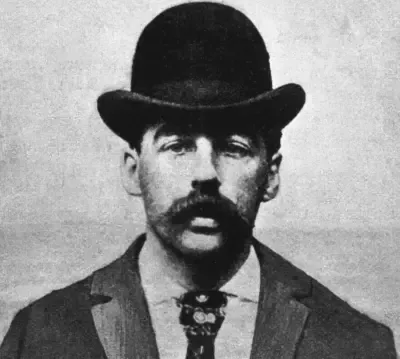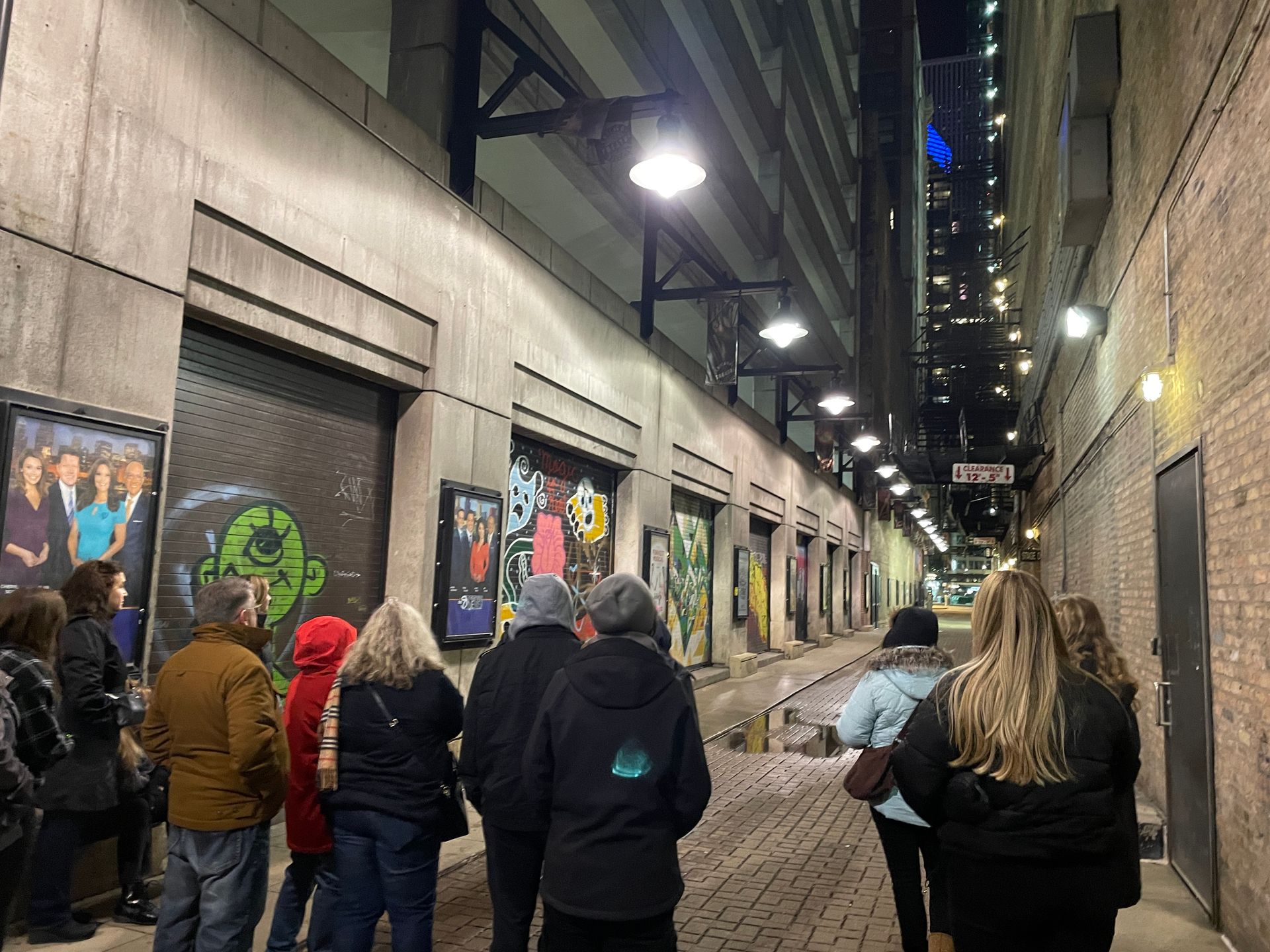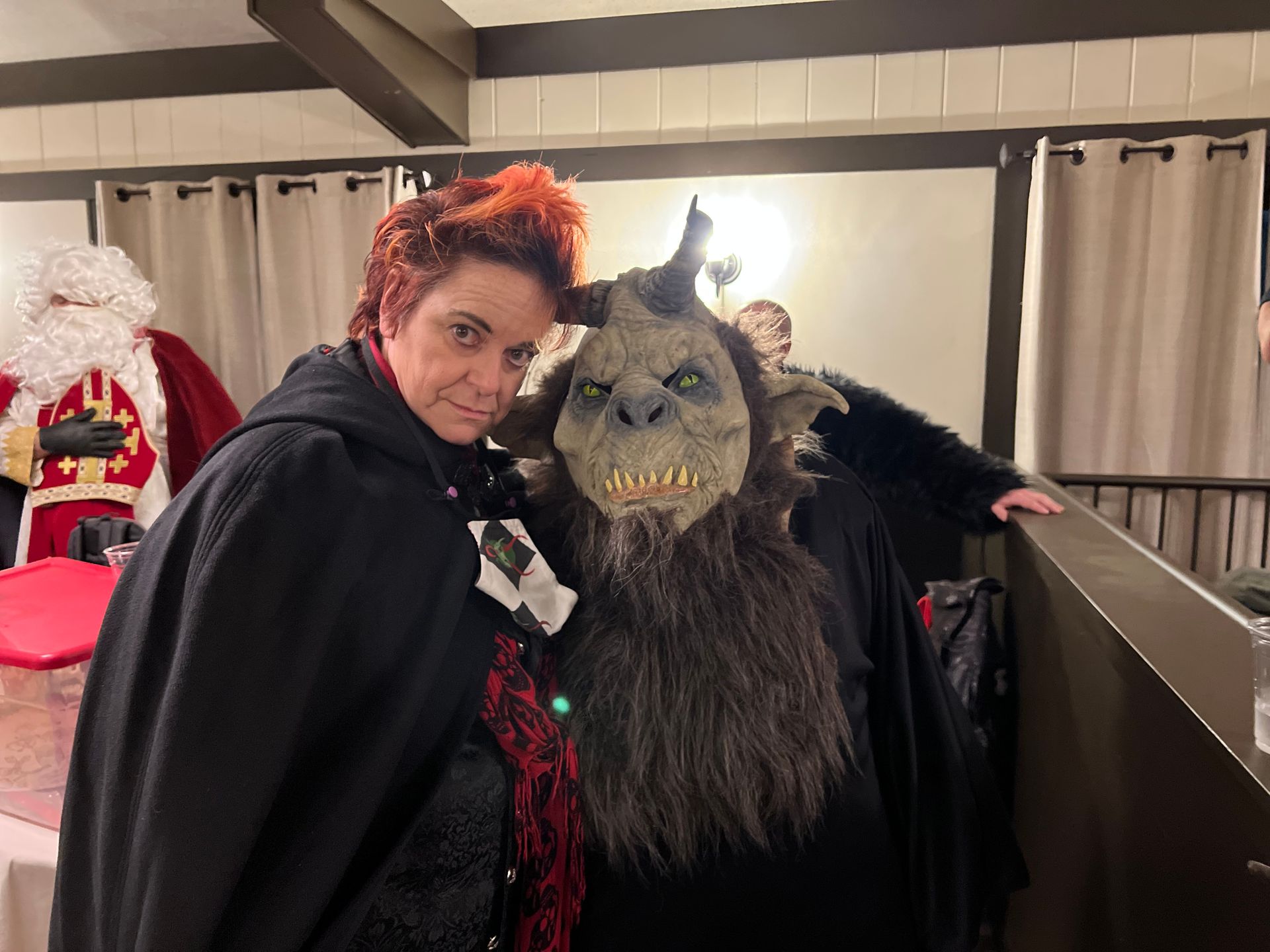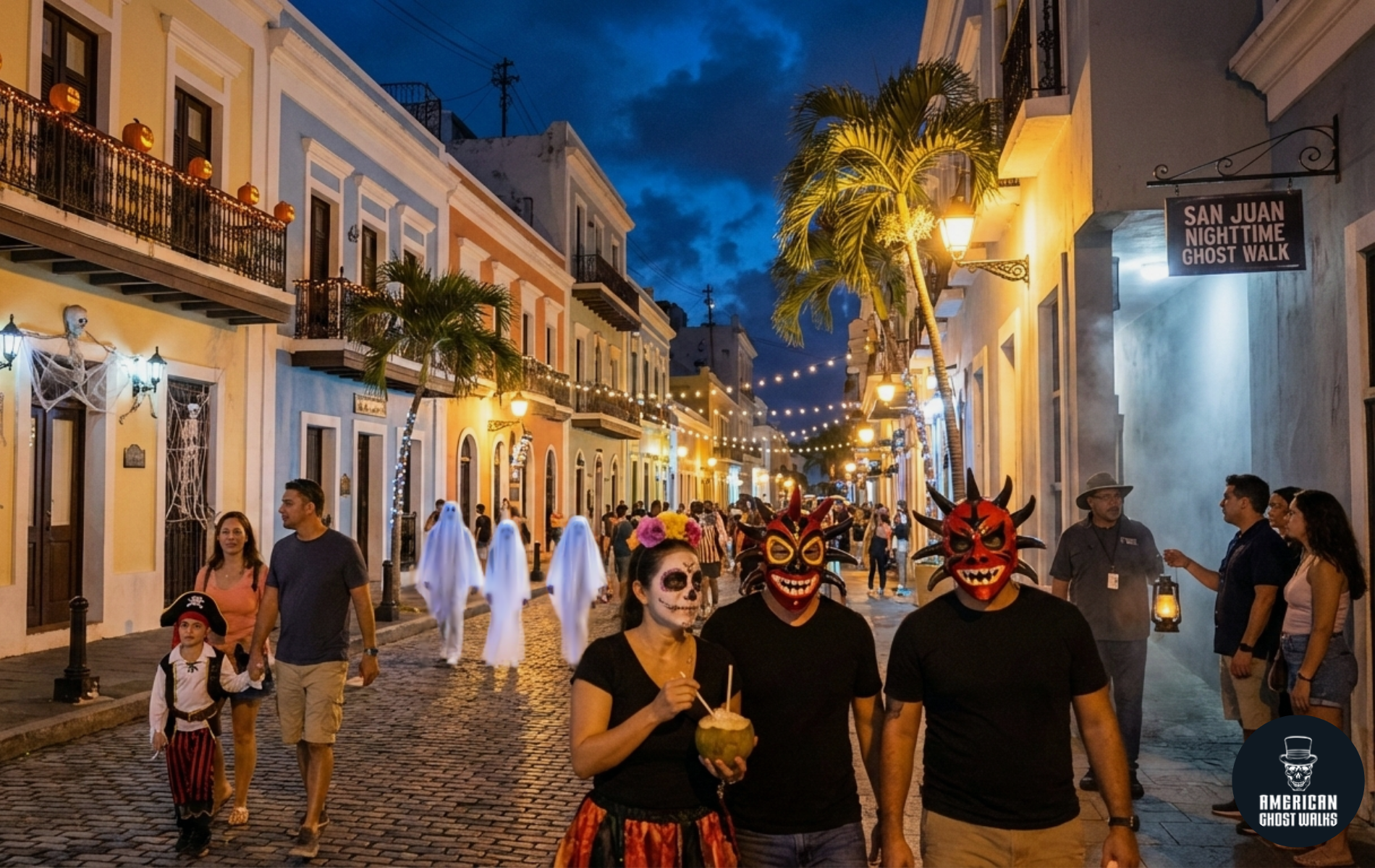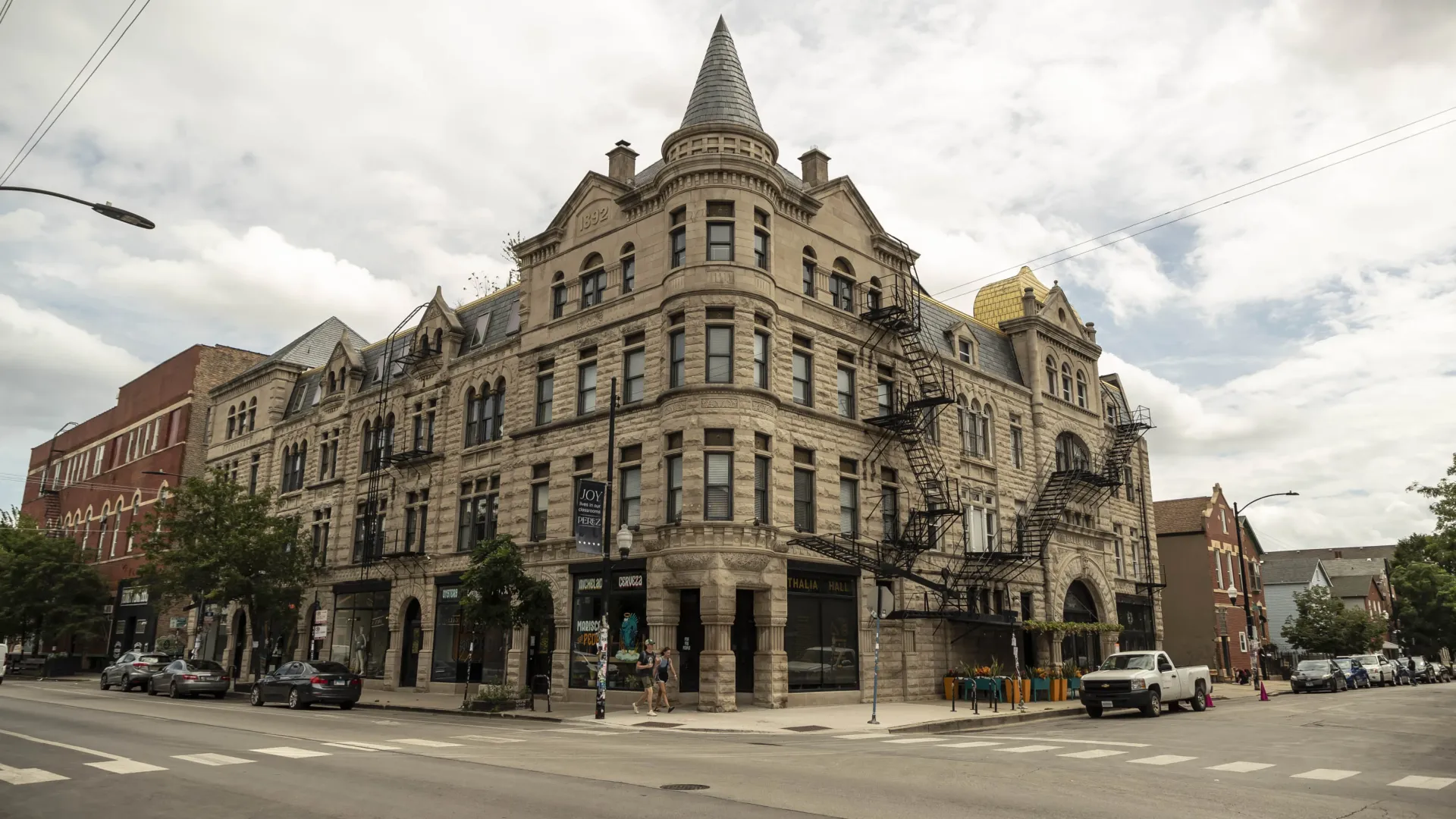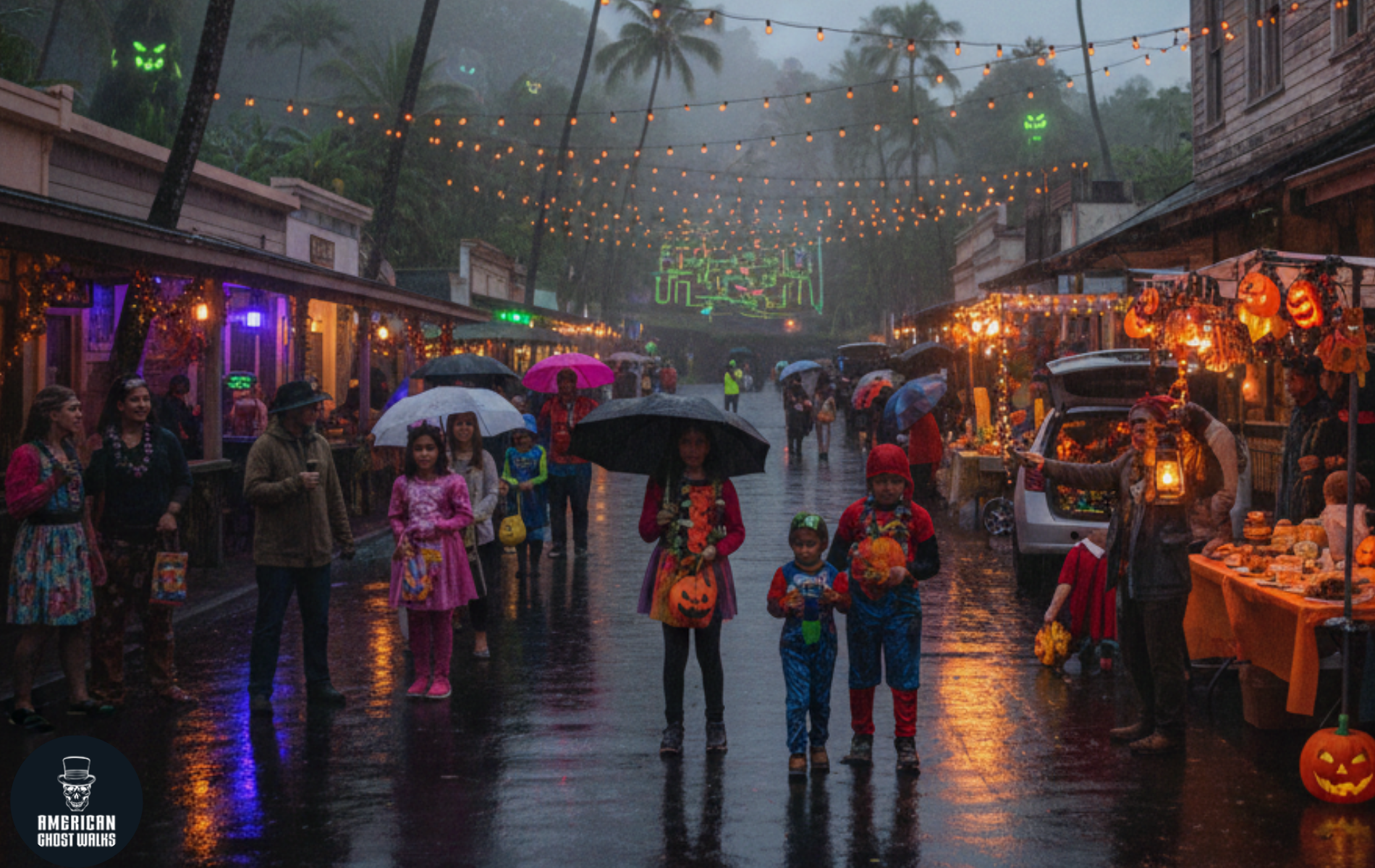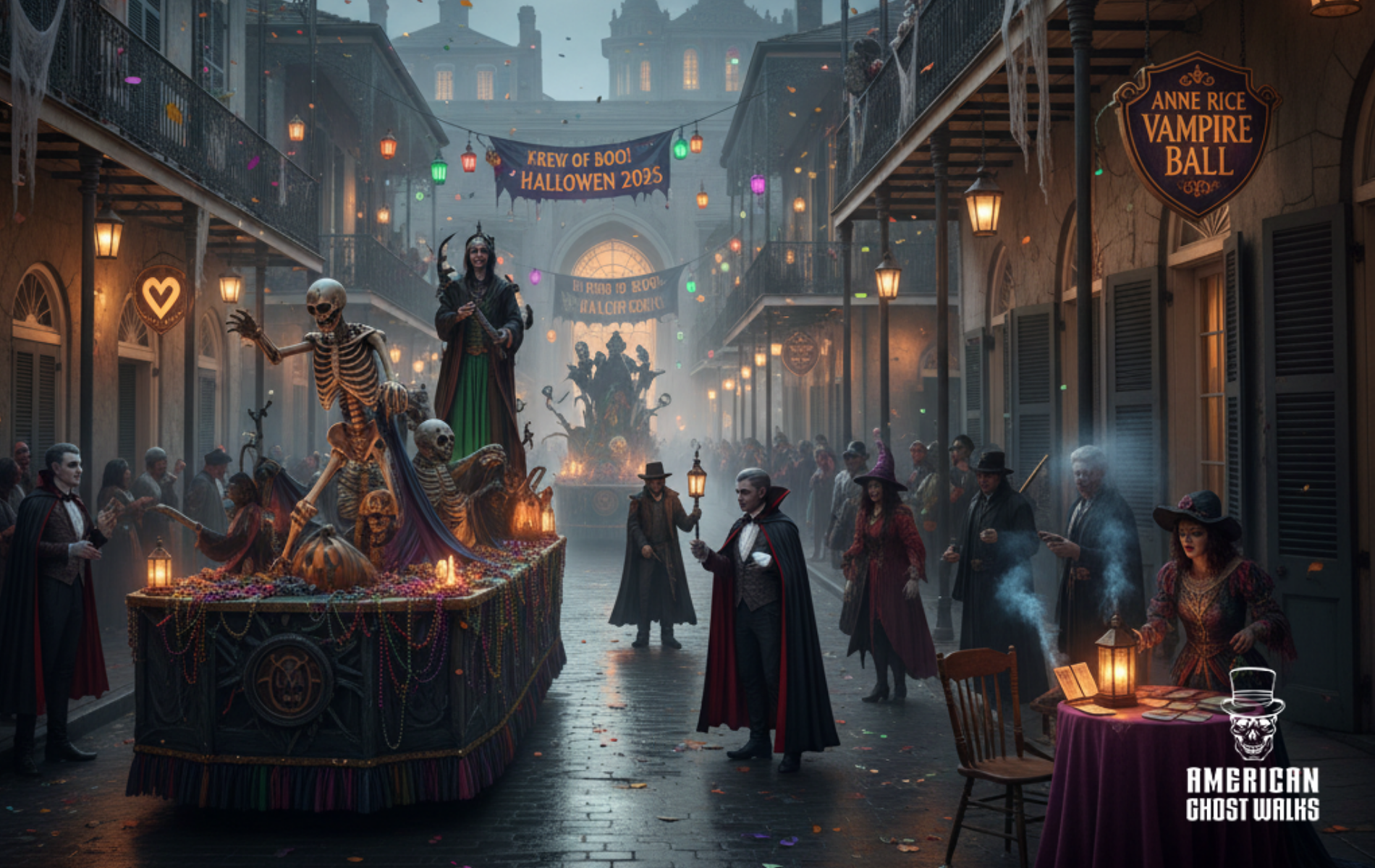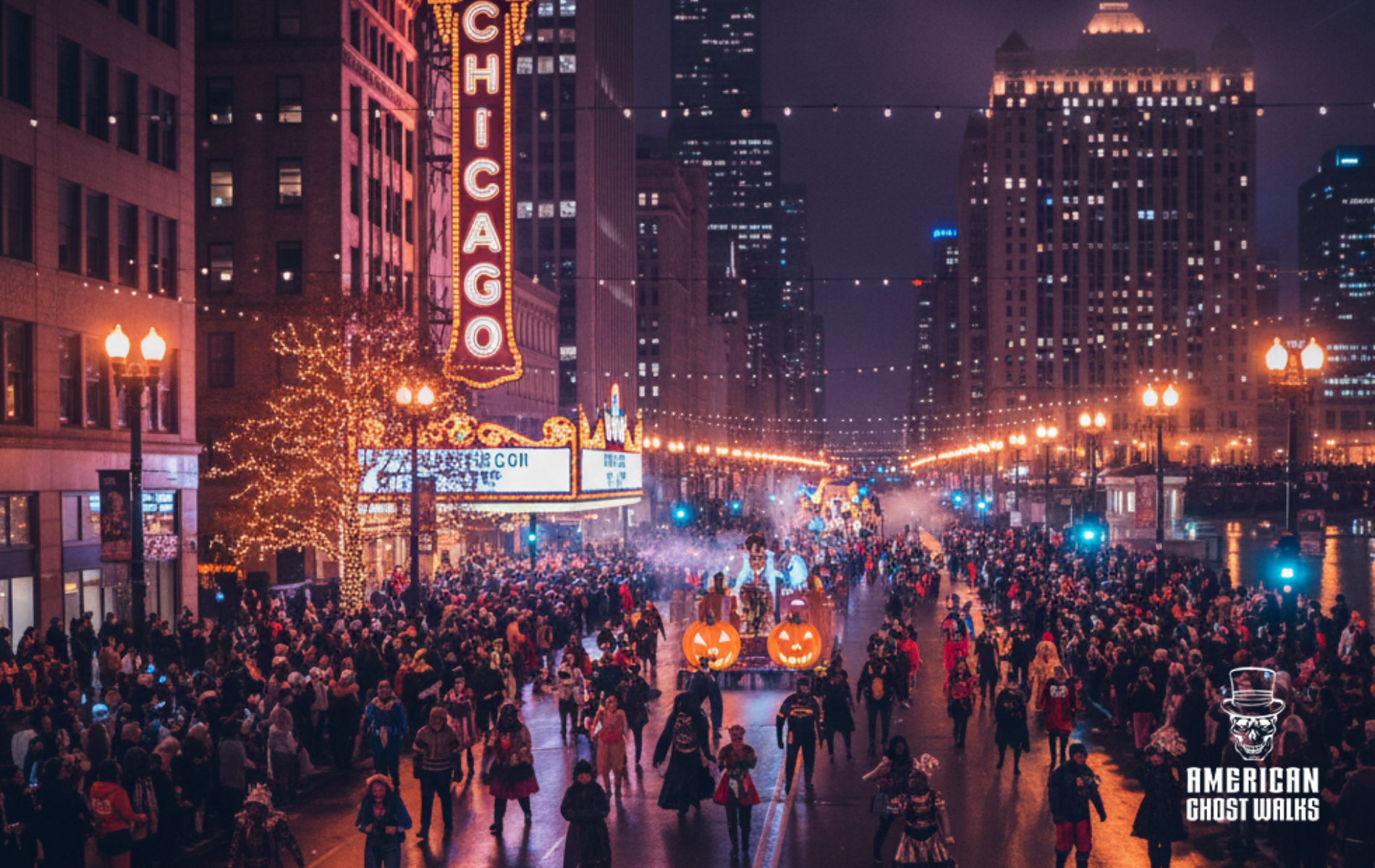The King of Haunted Chicago: Ghosts of the Congress Plaza Hotel
The Dark History & Ghost Stories Behind the Legendary Congress Plaza Hotel
So much is experienced by travelers. Open to new experiences and cut free for a day, a week, a month from routine, those away from home seem somehow open to truly alternate realities, especially at the site where they lay down to sleep.
In Chicago, the Sheraton Gateway Suites Hotel is an 11-story atrium hotel in O'Hare Airport's Rosemont convention hub. Like many such buildings, a number of past guests have reportedly committed suicide by throwing themselves over the atrium railings; since one such incident in the Fall of 2001, the victim has been seen—in suit and tie—gazing over the east side of the atrium rail.
A number of drug overdose deaths have also occurred here, and in such rooms guests have reported dark figures, disembodied voices and the dishevelment of their clothes and belongings, often while they are in the bathroom.
Glimpse at the Haunted Hotels in Chicago
The nearby O’Hare Hilton, directly across from the airport entrance, was long rumored to have an “uninhabitable” room—one that just made guests so inexplicably uncomfortable that they literally couldn’t sleep.
The metropolitan cities in Chicago have their history of ghosts, like Aurora's actively paranormal places. There’s the Baymont Inn and Suites, where employees have witnessed balls of white light in the lobby area, and where guests are repeatedly driven from room 208 by a spirit who seeks to strangle them in their sleep.
There is the old Leland Park, also in Aurora, haunted by a number of guests who have reportedly checked in, not to stay the night, but to throw themselves into the Fox River from this, one of the tallest buildings in the city. Noxious odors and disembodied voices are reportedly rife in the building, now an apartment development.
The Hotel Florence, in Chicago’s historic Pullman district, is rumored to be haunted by a woman who lived in the hotel at one time, and the hip House of Blues Hotel is home to a number of phantoms in the larger ghostworld of Marina City, including that of a young girl believed to have died in the hotel structure when it was an office complex.
The Drake Hotel, jewel of Lake Shore Drive, is home to the famed "Woman in Red"--a tragic young woman who jumped off the roof on the hotel's opening night in 1920 after discovering her fiance in the arms of another woman.
Among the multitude of haunted hotels in Chicago, however, none--or even all of them together--can touch the granddaddy of them all: the Congress Plaza.
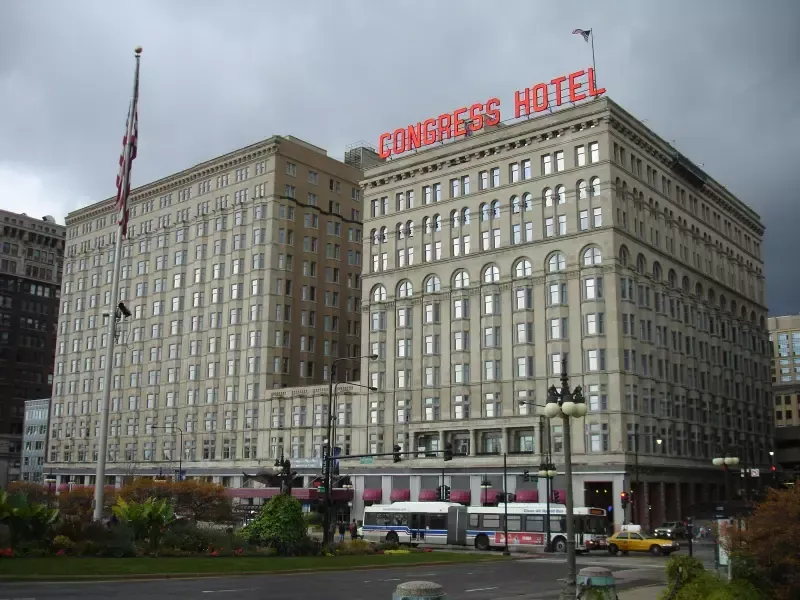
Congress Hotels & Paranormal Encounters in Their Haunted Rooms
One of Chicago’s largest and oldest hotels, the Congress was originally named the Auditorium Annex when it was built to house visitors to the Columbian Exposition—the transformative World’s Fair of 1893. The name referenced the Auditorium Theater across Congress Parkway, an acoustically magnificent structure designed by blockbuster architectural duo Dankmar Adler and Louis Sullivan.
The Annex’s original North Tower was designed by Clinton Warren, but Adler and Sullivan oversaw its development, including the addition of “Peacock Alley” (now shuttered), an ornate marble tunnel which runs under the street, joining the theater and the hotel. Later, in the early twentieth century, the firm of Holabird & Roche designed the South Tower, completing the current structure, which houses more than 800 rooms.
The South Tower construction included a magnificent banquet hall, now known as the Gold Room, which would become the first hotel ballroom in America to use air-conditioning. Another ballroom, called the Florentine Room, was added to the North Tower in 1909. These two famous public rooms combined with the Elizabethan Room and the Pompeian Room to host Chicago’s elite social events of the day.
On June 15, 2003, members of the local staff at the Congress began a strike after the hotel froze employee wages and revoked key benefits, including health insurance and retirement plans. Through the long months and years, the strikers have won countless supporters, their cause garnering momentum around the world.
Even future president Barack Obama and Illinois Governor Patrick Quinn walked their picket line, while the skeleton crew that continued to punch the clock was reported to have pocketed wages of more than thirty percent below the national standard. The strike went on to claim the fortunate honor as the longest hotel strike in history, leaving in its wake a hotel haunted by pulled proms, boycotted conventions and an estimated loss of 700 million dollars in revenue.
And many, many ghosts.
House of Presidents: Congress Hotels' Role in History
Indeed, the ghosts of the Congress are everywhere. And no wonder. Grover Cleveland, William McKinley, Teddy Roosevelt, William Howard Taft, Woodrow Wilson, Warren Harding, Calvin Coolidge, and Franklin Roosevelt all made the Congress their base of operations while in Chicago, leading to the hotel’s longtime moniker, “The Home of Presidents.”
In 1912, President Theodore Roosevelt announced his new “Bull Moose” platform in the Florentine Ballroom, and in 1932 the hotel served as headquarters for Franklin Roosevelt and his hopeful Democratic party. A few years later, Benny Goodman broadcast his wildly popular radio show from the hotel’s Urban Room, a posh nightclub that drew the city’s most coveted clientele, and in 1971, President Richard Nixon addressed the Midwest Chapters of the AARP and National Retired Teachers Association, speaking before no less than three thousand members and guests in the hotel’s Great Hall.
For years Al Capone played cards every Friday night in a meeting room overlooking Grant Park, and rumors abound (though most certainly false) that he even owned the Congress for awhile. What is true is that Jake “Greasy Thumb” Gusik phoned Capone in Palm Island, Florida, from a phone in the Congress Plaza . . . before and after the St. Valentine’s Day Massacre.
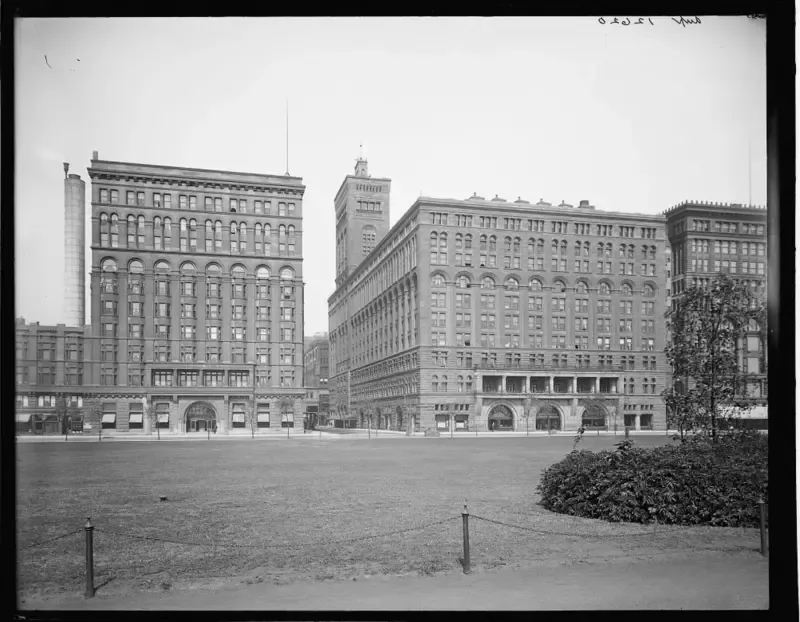
Congress Hotel Chicago Haunted History
But the ghosts of the Congress are not generally those of headline-grabbers. Rather, they are wisps of memory, glimmers of the hundreds of thousands of ordinary guests who have glided through its halls for more than a century, often embroiled in personal drama, heartache and tragedy.
Deaths, Suicides, and Murders in Congress Hotel
Endless, it seems are the stories that echo the tale of James Kennedy, a New York man who checked in, alone, in May of 1910. He went to his room, cut the dry cleaners identification tags out of his clothes, burned his papers, walked to the Lake and shot himself. Later that same year, an insurance salesman--Andrew Mack--called on a friend at his Congress Plaza hotel room before also walking to the Lake and apparently drowning himself at the foot of Van Buren street.
There was the salesman who threw himself down an elevator shaft, the drifter who jumped off the roof of the north tower and the troubled family man who hanged himself from a cupboard hook.
In the summer of 1916, mining investor Morse Davis and his wife were believed to have formed a suicide pact when Davis was found dead in their Congress hotel room 312 of cyanide poisoning. His wife was also at death's door but alive. She claimed they had taken the cyanide by accident, having confused it with epsom salts. A few days later, however,--broke and staying at St. Mary's Mission house on Peoria street--she tried to throw herself out a third story window and was promptly sent to a psychiatric hospital.
In August of 1939, Adele Langer, a Prague native, threw her young sons, Karel and Jan, from a thirteenth floor window in the Congress Plaza. Langer's widower described the family's despair at being forced to flee Nazi influence in their homeland, leaving behind home and family.
In August of 1950 a guest shot a Congress employee and then himself when the staff member came into the guestroom to collect on a $104 hotel bill for the jobless and distraught boarder.
In May of 1966, Rockford attorney Frederick Haye was found naked and strangled with his shirt, his wrists and feet bound with his own socks.
Horrific Accidents in Congress Hotel
Accidents, too, have left their mark here. In 1904, an elevator operator at the Auditorium Annex fell seventy feet to the subfloor, dying on impact. In July of 1926 a Galesburg woman, Mrs. Harriet Harrison, staying at the Congress with her husband before a planned European excursion, took a wrong step and plunged six stories down an elevator shaft to the hotel basement.
Investigations & Encounters
Since 1989, I have participated in more than 3 dozen investigations of the Congress Plaza, documenting no fewer than 47 distinctively haunted rooms and at least two ballrooms, as well as common areas such as employee workrooms and public guest areas. The sheer variety of phenomena reported and experienced at this massive structure is mind-boggling. Truly, there seems to be no end to the historic tragedy or of its supernatural manifestations.
The Florentine Room, an ornately painted ballroom, was originally also used as a roller rink when the hotel opened to World's Fair visitors in the 1890s. Security guards say that, on their wee-hour rounds, cheerful organ music can still be heard from outside the locked doors, as well as the sound of old wooden skate wheels against the wooden floors. The piano is known to play by itself, and a woman may be heard screaming outside a staff door on the east side of the room.
The women's restroom is likewise haunted by a female presence, who appears in the mirrors, staring at the living and following them out down the hallway.
In the lavish Gold Room—a hotspot for Chicago wedding receptions—bride and groom are often chilled by photographers' photos. Those snapped around the grand piano tend to develop with one or more people missing from the pictures, and the doors tend to be found unlocked no matter how often they are securely shuttered.
In the South Tower, there is the phantom who lingers at the fifth floor passenger elevator, where moaning is frequently heard by guests awaiting its arrival. The third floor hallways are home to a one-legged man, often reported to the front desk by guests who think a vagrant has found his way inside. One former hotel operator who worked the property in the 1940s remembers a resident with a wooden leg who always had a big smile and a big tip, who suffered a heart attack at breakfast during his residency and died.
Also in the South Tower, a young boy of about ten has been a prolific presence, running up and down the halls in knee breeches and high button boots. Guessing at his identity, some tie him to one of the many families who made their homes at the hotel in years gone by, and the all-too-common deaths from then-incurable illnesses like tuberculosis and pneumonia.
As for sleeping rooms, only one guest room in the South Tower is reported to be haunted: Room 905, where constant phone static has bedeviled guests for years.
But the North Tower? That’s a different story.
Horrors of the North Tower
There are the rooms that I promised the management not to number: the room where the pictures on the wall rotate 360 degrees before the eyes of astonished residents; the room where an impromptu exorcism was held, on some unidentified Chicago winter’s night not so long ago, before the victim was moved to a local convent.
There is the room fled by two Marines in 1989, running through the lobby in their boxer shorts at 3 a.m., with the later explanation that a towering black figure had entered the room from the closet and approached their beds, and the room where a woman slit her wrists in the bathtub after a night on Rush street in the 1970s, who is said to still be glimpsed during the night by weary boarders.
Congress Plaza Hotel 12th Floor Sealed Room
In Room 474 a once-resident judge eternally changes the channels on his cherished television set. In Room 759 another erstwhile resident pulls the door shut from inside when guests try to enter. It is said that he was an elderly gentleman—a longtime resident--whose son had come to take him to a nursing home many years ago. Wanting to stay put at the hotel, he mustered the strength to try to keep his son (and security guards) from opening the door. Even now he remains, determined to live at the Congress forever.
And then there is THE room.
The Room in the Congress Hotel
Rumors have long flown that it was a room here at the Congress Plaza that partly inspired writer Stephen King to create his short story, 1408 , a gripping tale of a professional—and skeptical—ghost hunter who meets his match in a mysterious hotel room (1408) said to be too haunted to lease. Unbelieving, the young man convinces the hotel’s manager to let him have the room for a night, though the previous tenants all took their own lives during their stays in it.
The real-life 1408 was always believed to exist on the Congress’s most haunted floor: the 12th floor of the older North Tower. Some point to a room which is padlocked and say that's the one. Others say it's the one that's been boarded up. Still others claim you can't even place it anymore: it's been papered over to remove any sign that it was every there. This room does, in fact, remain. But it's not on the 12th floor.
If it still had a number, the room would be--believe it or not-- number 666. At some point in time, the spot where this room's door should be was drywalled over, a piece of baseboard patched in to connect the wood where the doorway once stood. The lintel above the old doorway is, indeed, still quite visible.
Some have ventured that this room was simply put out of use because of its stigmatized number, but there is definitely more to this story. Though no staff member claims to remember why this room was sealed off forever, window washers tell us it was closed up with the furniture still inside, almost as if even the objects in the room were believed to be cursed.
A Ghost Hunter's Greatest Fear
Over the past thirty years, I've had my own harrowing moments at the Congress Plaza. There was the morning I was awoken by the sound of the shower blasting full force, steam filling the bathroom, though I could get barely a trickle and little warmth when I'd tried to take a bath. There was the night my worst fear as a ghost hunter came true: the sheets and blankets were peeled off me by unseen hands as I slept.
Then came the Night of Incessant Knocking, as we came to christen it: More than a dozen times through the night, someone rapped three times on our door, but no one stood by. And there was the night my daughter and I were kept awake, chillingly, by the sound of two men whispering at the foot of our bed: "Are they still awake?"
Whatever the beliefs of others, my own experiences have firmly rooted this enigmatic spot at the pinnacle of my "Most Haunted." Escorting in thousands of tour guests of these 15 years, I have observed that, whether they walk in believing or not, most who enter the Congress today are struck by a peculiar feeling: something "not quite right," something "menacing" or "sinister" as it's variously described. Most leave agreeing that they would rather be alone almost anywhere but in the hallways of this storied monument to Chicago's troubled past, full of sorrow and secrets, with always room for one more.
Dive deeper into the mysterious world of hauntings with our curated collection of paranormal investigations and ghostly encounters. Read more stories like this in
“Ghosts of Lincoln Park: A Chicago Hauntings Companion” by Ursula Bielski, a book of downtown Chicago ghost stories written by our own American Ghost Walks team.
Click here for more.
Dive deeper into the mysterious world of hauntings with our curated collection of paranormal investigations and ghostly encounters. Read more stories like this in “The Original Chicago Hauntings Companion” by Ursula Bielski, a book of Chicago ghost stories written by our own American Ghost Walks team. Click here for more.
Are you fascinated by the supernatural and craving more spine-tingling tales? Whether you're a skeptic seeking evidence or a believer looking for your next supernatural fix; "American Ghost Books" offers everything from historical haunted locations to firsthand accounts of paranormal experiences.
Each book has been carefully selected to provide authentic, well-researched stories that will keep you turning pages well into the night. Don't let your curiosity about the supernatural remain unsatisfied – explore our collection and find your next ghostly adventure today!

